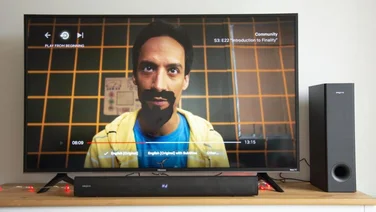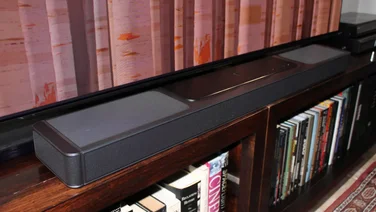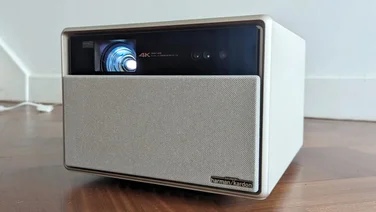To help us provide you with free impartial advice, we may earn a commission if you buy through links on our site. Learn more
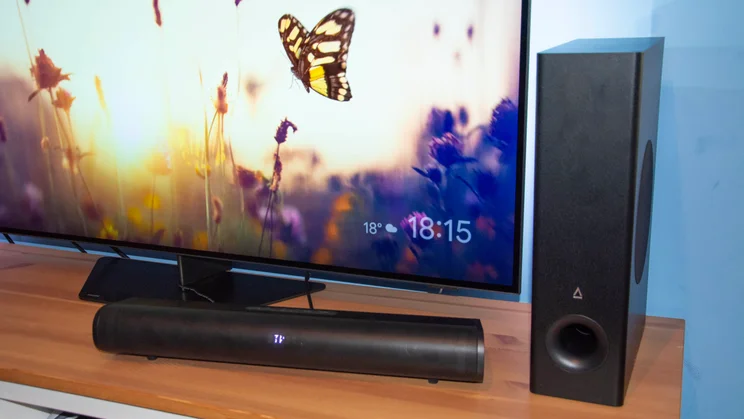

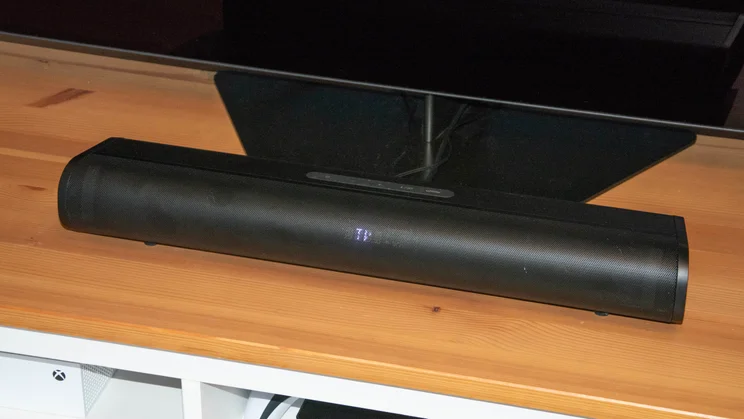
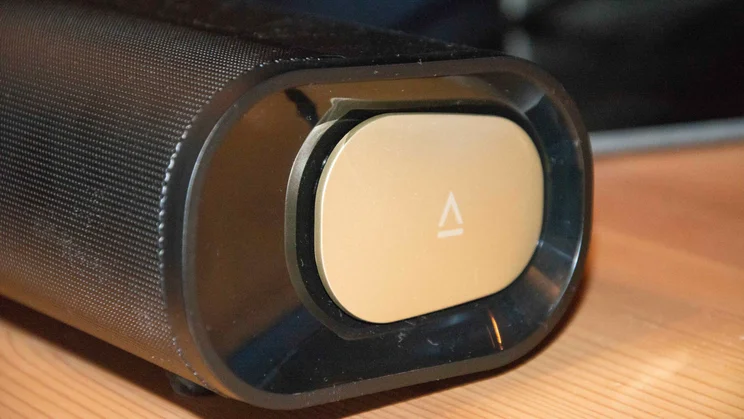
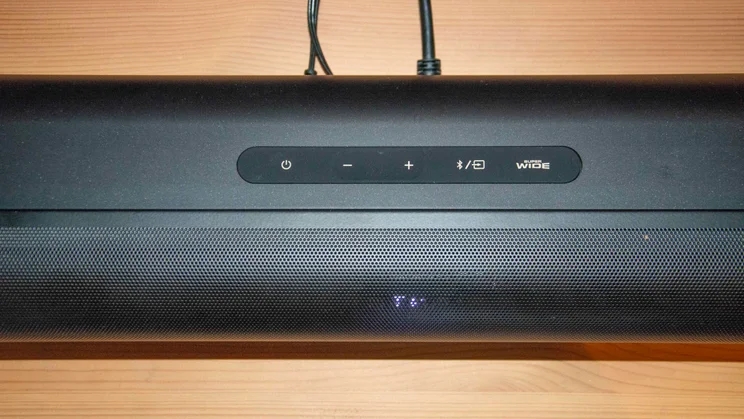
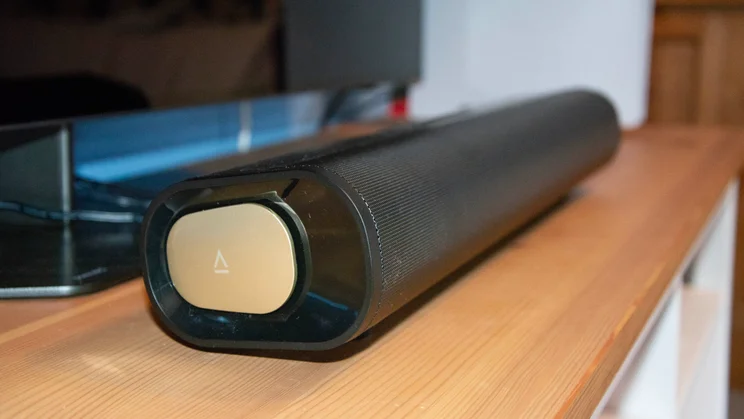
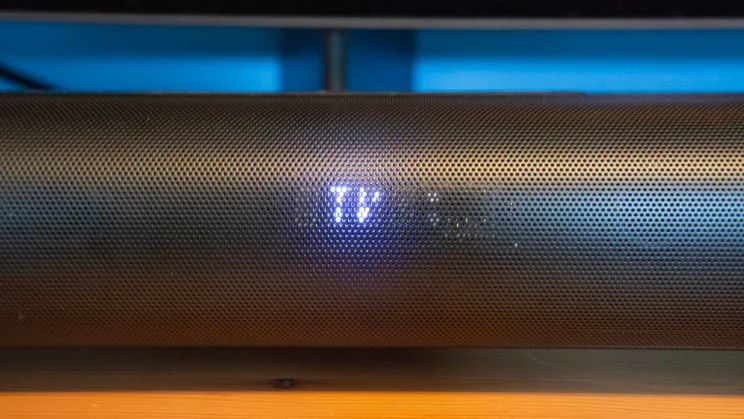
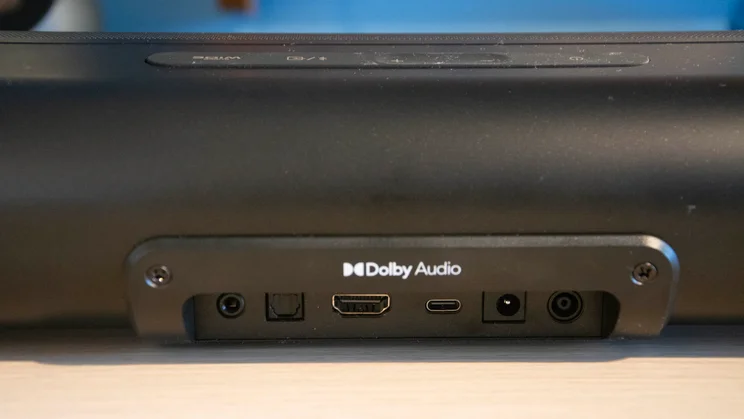
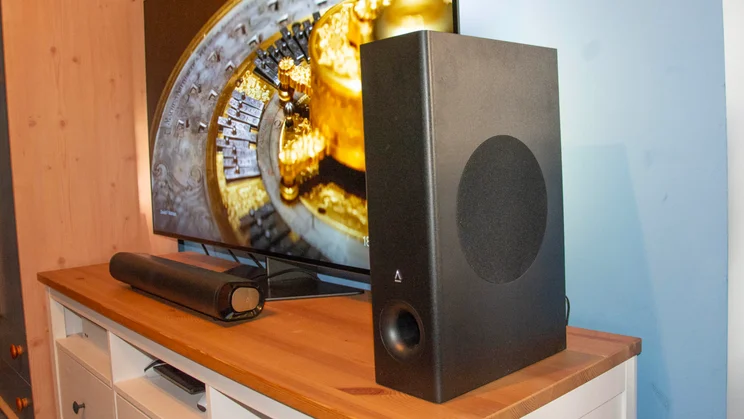
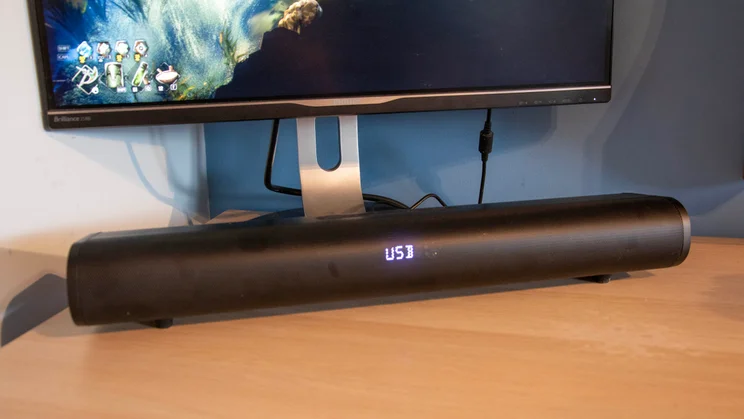
- Compact soundbar
- Potent low-end response
- Works well as a TV and desktop option
- Volume inconsistencies with some sources
- No Night mode
- Harsh trebles in Music mode
The Creative Stage Pro is the latest addition to a soundbar series that has received very positive reviews from us. The Stage V2, Stage 360 and Stage SE were all award winners, so the Pro model has a lot to live up to.
Much like its predecessors, the Stage Pro is a cost-effective way of improving your home audio. Creative’s “SuperWide” soundstage-expansion technology is more immersive than the Surround mode found on the Stage V2, while the near- and far-field options enable it to work equally effectively under a monitor or TV.
You’re paying a premium for that flexibility – the V2 can be picked up for just £90 – and frequently moving a soundbar and fairly hefty subwoofer between your desktop and TV stand is a faff. As a result, the Stage V2 remains the better entry-level option for most people. The Stage Pro sounds slightly better, and its soundbar is easier on the eye, but it’s not an essential upgrade.
What do you get for the money?
The Creative Stage Pro costs £130 and, like the Creative Stage V2 and Creative Stage 360, is a 2.1-channel system comprising a soundbar and a subwoofer. It matches the Stage V2’s sonic output exactly, with the left and right channels handling 20W RMS apiece and the sub capable of delivering 40W RMS. That’s a total of 80W RMS, though the Stage Pro can hit a stated peak of 160W.
The soundbar component isn’t as wide as its stablemates, but is slightly deeper and taller, at 550 x 112 x 81mm (WDH). Those measurements make it a decent fit for 32in to 55in TVs and larger monitors. I tested it with 55in Philips OLED809 and TCL C7K televisions and a Phillips Brilliance 258B monitor, with which it looked a little out of place.










Regardless of whether you’re using it as a TV or desktop soundbar, you’ll need to find space for the subwoofer, which is tall and narrow at 115 x 265 x 420mm (WDH). It’s not wireless, so it needs to be connected to the bar via its tethered 2m cable.
The Stage Pro offers various physical connection options. There’s an HDMI (ARC) port, USB-C port, AUX-in and optical input, and wireless streaming over Bluetooth 5.3. Creative includes a USB-A to USB-C cable in the box, but not an HDMI cable, so you’ll need your own if you want to take advantage of its ARC functionality.










In the absence of a companion app, the included IR remote control is your primary method of controlling the soundbar, unless you plan to get up from the sofa to use the buttons on the bar. The remote is sensibly laid out, and the buttons are labelled in a self-explanatory fashion. Creative doesn’t include a pair of AA batteries in the box, though. Stingy.
Unlike the Stage 360, the Stage Pro does not support Dolby Atmos. It instead supports Dolby Audio (Dolby Digital Plus), which focuses on delivering clear dialogue and detail rather than cleverly positioning sonic objects in a three-dimensional space.
In addition to this, you’ve got two proprietary SuperWide audio modes: Near Field and Far Field. Both project sound outside the physical confines of the bar, with the former being better optimised for desktop use, and the latter seeking to fill your room when watching TV. SuperWide can be engaged independently of the Movie, Music, Vocal and Gaming EQs, which are easily cycled through using the “Mode” button on the remote.
What does it do well?
The Stage Pro is the epitome of a plug-and-play soundbar, which is exactly what you want at this price. Connect it to the mains, hook up the sub and your source, and you’re good to go. And once you’re going, controlling it is straightforward and intuitive.
The digital display helps here. It’s basic, but doesn’t need to be anything more than that. It’ll tell you which source you’re using, which mode you’re in, show volume adjustments and tweaks to bass and treble level. And if you don’t want the LEDs distracting you, pressing the DISP button on the remote hides the display when it’s not being engaged with.
The Stage Pro has a healthy selection of ports. Most consumers will have a TV with HDMI ARC, but those who don’t are well catered for, and the USB-C input is ideal for connecting to a laptop or monitor.










And while I wouldn’t buy this system for its aesthetics, the Pro’s soundbar looks snazzier than its predecessors, thanks to the gold sections built into each end and the gold detailing on the bar’s control buttons. It’s also very compact; its size is a big plus for those seeking a bar that fits on a narrow TV cabinet or desk.
Those pros are all well and good, but the key question is whether the Stage Pro improves how your TV or desktop PC setup sounds. The good news is, yes, it does. The two TVs I tested the Stage Pro with – the TCL C7K and Philips OLED809 – both have very competent in-built audio systems, but I preferred using the Stage Pro over them.
The forward-firing nature of the sound played a big part, but I also found the SuperWide mode engaging, and the subwoofer added impressive clout to low-end effects.










Without SuperWide engaged, there was decent clarity across the frequency spectrum in Movie mode. Dialogue was intelligible and well-integrated with a robust yet defined low-end response and straight-edged treble. However, the sound felt like it was coming from a small box in front of the television.
Engaging SuperWide Far Field changed that while watching a couple of episodes of Wednesday on Netflix from my sofa three metres away from the TV. The mode broadened the soundstage considerably, without tarnishing the overall sound quality. Dialogue sounded a touch further back in the mix, but no less clear, while the additional width to the presentation gave me a heightened sense of immersion.
During one of the most iconic action sequences of all time – Neo and Trinity’s lobby shootout in The Matrix – the Stage Pro balanced various intense elements very nicely. Machine guns rapidly firing off rounds, pump-action shotgun blasts, bullets dropping and close combat martial arts were all coherently knitted together with the rolling bassline of the Propellerheads’ Spybreak!, making for an exhilarating watch and listen.










Near Field mode worked well too, enhancing my experience while I was gaming on my desktop PC with the Stage Pro under my monitor. The bar directed sound to give me an intimate feeling of being central to the action while playing No Rest for the Wicked and Clair Obscur: Expedition 33, but avoided overwhelming me aurally.
The subwoofer performs admirably, communicating sub-bass and mid-bass with welcome definition and adding plenty of punch. There was a clear tonal difference between the thumping of enormous feet and the pounding drum in the soundtrack as a grotesque Mr Hyde prepared to throw Hugh Jackman’s titular character off a rooftop in 2004’s Van Helsing. The sub doesn’t overshadow the output of the soundbar either, which isn’t always the case on cheap 2.1 systems.
What could be improved?
There was a shocking discrepancy between the Stage Pro’s volume output on PlayStation 5 and other sources. While I could comfortably watch The Thursday Murder Club on Netflix with the volume set to 16 (50% of the Stage Pro’s maximum level of 32), even the lowest volume level felt too loud on the PS5 in the evening.
I tried reducing Bass and Treble to their minimum values, turning off SuperWide and EQ modes, switching the port my PlayStation 5 was plugged into and adjusting settings on the console. However, the output was too boisterous no matter what. So, when gaming after 9pm, I turned the Stage Pro off and relied on my TV’s speakers instead. A Night mode to reduce the dynamic range would have been very welcome here.










When I was able and willing to blast the volume during the day, the Stage Pro revealed another of its weaknesses; it loses composure when pushed to its limits. This isn’t surprising given how loud this affordable and compact soundbar can go. Its volume ceiling is mighty impressive, but the Pro starts to sound strained once you hit around 85% volume.
I never needed to push it that loud, but if you’re after room-filling sound at ear-shattering levels of volume, you’ll need something larger and with higher-quality drivers.










Fans of object-based audio formats like Dolby Atmos and DTS:X will need to look elsewhere, too. The Stage Pro’s SuperWide tech is effective at broadening a soundstage, but its presentation offers little in the way of verticality, and it doesn’t track or position audio cues with great conviction. The Stage 360 is the cheapest Atmos system with a soundbar and a sub that we’ve tested, but the Hisense AX5125H is our number one pick for affordable Atmos and true surround sound. It’s a 5.1.2-channel setup with a soundbar, sub and rear speakers, but can be picked up for under £250.
According to several manufacturers I’ve spoken to, more and more people are using their soundbars as Bluetooth speaker alternatives while at home. The Stage Pro goes louder than any £130 portable speaker I’ve tested, and its potent subwoofer ensures justice is done to big bassy tracks such as Oxide & Neutrino’s Bound 4 da Reload. However, I found the treble reproduction harsh in the Music mode, even with it dialled back using the treble adjustment button on the remote.
Should you buy the Creative Stage Pro?
If you already own the Creative Stage V2 or Creative Stage 360, no. The Stage Pro is a capable and competitively priced 2.1 system, but it doesn’t improve on its predecessors enough to warrant an immediate upgrade.
I’m not sure how much longer the Stage V2 will be around for, but that’s where I’d point most people looking for an affordable and effective soundbar to pair with their TV. It’s £40 cheaper than the Pro, and the sound quality difference between the two isn’t huge.
The Pro is the better choice for desktop setups due to its Near Field mode, however. And the flexibility it offers in terms of being effective as both a PC and a TV soundbar may sway some consumers. But moving it from my TV stand to my desktop and back again once was enough to convince me that most sane people will use it with one or the other, not both.



